Mars
Latest
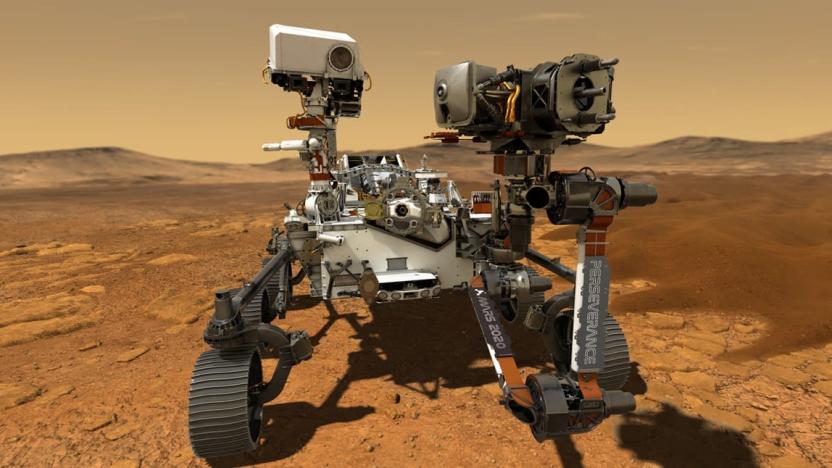
The next Mars rover will be named 'Perseverance'
During a live webcast on Wednesday, NASA administrators unveiled the official name of the upcoming Mars 2020 Rover mission. Say hello to Perseverance.
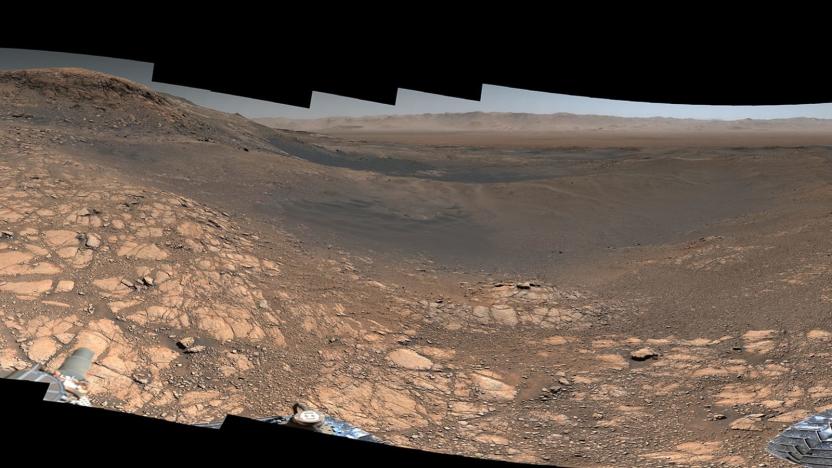
Explore Mars with a 1.8-billion-pixel panorama from the Curiosity rover
NASA's Curiosity rover has sent the highest-resolution panorama of Mars ever taken back to Earth. Now, you can explore the Martian surface by zooming in on the giant 2GB image or cruising around in a 360-degree video that NASA shared on YouTube.

NASA accepts applications for astronauts for the first time in four years
Want to be one of the earlier astronauts to return to the Moon or explore Mars? You now have your chance. NASA has started taking applications for its next round of astronauts, some of them likely to be part of future Moon and Mars expeditions. You'll have until the very end of the month (March 31st at 11:59PM Eastern) to apply, although time isn't the main constraint here -- qualifying is.

NASA wants students' help designing tech for the Moon and Mars
NASA is enlisting whatever help it can get to make sure its crewed Moon and Mars missions go smoothly, and that might include help from schools. The agency is running a new round of its Moon to Mars Exploration Systems and Habitation Academic Innovation Challenge (M2M X-Hab if you want a much shorter name) that encourages university students to study and develop spacefaring tech. The challenge will reward work on habitation, vehicles, robotic advance missions, "foundational systems" (think autonomous mission tech and remote manufacturing) and human spaceflight architecture focused on the lunar Gateway.

SpaceX approved to build Starship factory and research hub in LA
SpaceX has been given the final go ahead to build its Starship manufacturing plant in the Port of Los Angeles. Authorities granted the company a permit for the facility by a unanimous 12-0 vote, allowing Elon Musk and his team to push on with the development of technology designed to take humans to the moon and Mars.

The Hayden Planetarium’s new show celebrates unmanned space probes
The astronomy I learned as a kid was pretty limited — the Earth revolves around the Sun and, of course, the whole "My Very Energetic Mother Just Served Us Nine Pizzas" thing. Of course, that expression no longer applies because our understanding of the solar system is a lot more nuanced these days. Not just because we're adults now, but because the entire field has been revolutionized by probes, plumbing the depths of distant bodies and returning that data to us over decades. That deeper understanding of our solar system is at the heart of the American Museum of Natural History's new space show, Worlds Beyond Earth, but its unsung hero is the technology that made it possible.

NASA finds 'water ice' just below the surface of Mars
To explore the solar system beyond our planet, one important factor is the ability to locate water which can be used for drinking and for creating rocket fuel. To assist in the hunt for water on neighboring Mars, NASA has released a "treasure map" of potential ice locations on the red planet.

NASA's InSight lander can finally dig a hole for its Mars heat probe
NASA's InSight lander was supposed be digging a hole so a probe (above) could measure the heat escaping from Mars' interior, but it hasn't made much progress since work got started in February -- it hadn't even finished burying itself. At last, it's making some headway. The agency has revealed that the probe, nicknamed "the mole," is finally digging in earnest thanks to a new strategy. The arm had been stymied by unusually rough soil, but the team found it could get the necessary friction by having InSight press its robotic arm against the probe.

Virgin Orbit plans to send cubesats to Mars as early as 2022
Virgin Orbit plans to be the first private company to send cubesats to Mars. Today, it announced a partnership with the Polish satellite company SatRevolution and a dozen Polish universities to design a series of small-satellite missions to the Red Planet. The first cubesat could launch as early as 2022.
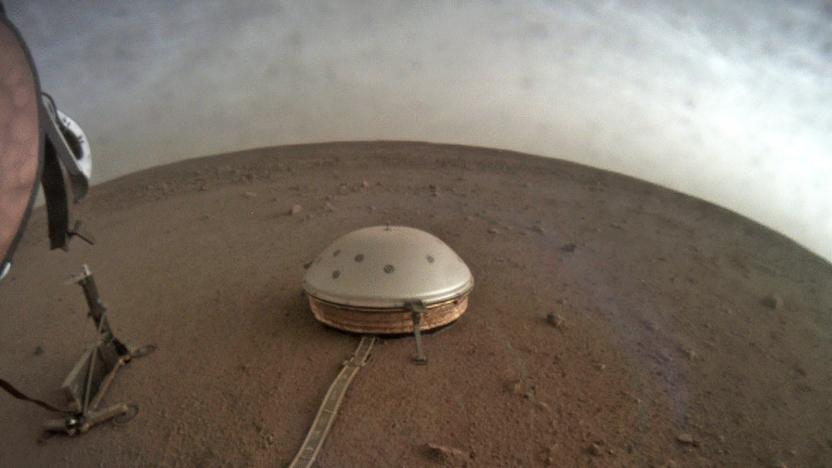
NASA shares the odd sounds from its Mars seismometer
NASA's InSight lander is providing a veritable soundtrack for Mars. The agency has posted a handful of recordings from the SEIS (Seismic Experiment for Interior Structure) that give a feel for Mars' activity. Two of them are "representative" marsquakes, and might be good for testing the bass response of your headphones or speakers -- they're low, steady rumbles. They suggest that Mars' crust is a blend between Earth's and the Moon's, with seismic events lasting longer than on the Earth (about a minute) but much shorter than its lunar neighbor.
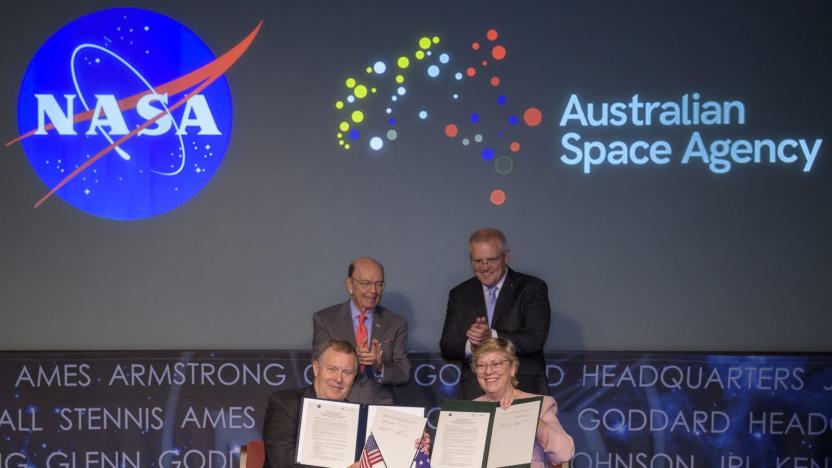
Australia will help NASA go to the Moon and Mars
The Australian government has announced that it's joining forces with NASA and supporting its exploration missions to Mars and the Moon, including the Artemis program. Under the partnership, NASA expects Australian businesses and researchers to contribute to its missions' needs when it comes to robotics, automation, remote asset management and other relevant areas.
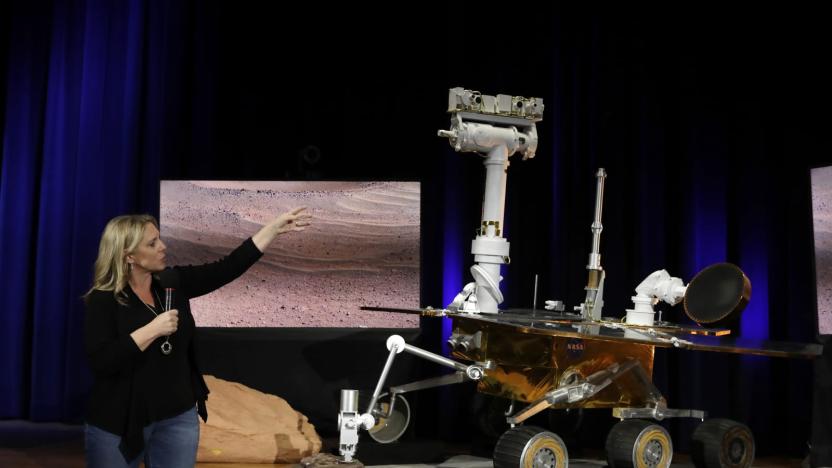
NASA starts accepting kids' name suggestions for its Mars 2020 rover
If you're a student who's been mulling over names for the Mars 2020 rover, it's now your time to shine. NASA has started accepting short essays from K-12 students who want to give the robotic explorer a proper identity. You'll have until November 1st to submit an idea, and the competition will be divided into three groups based on grade level (K-4, 5-8, 9-12) with frontrunners advancing based on appropriateness, originality and significance. You probably won't see a Rover McRoverface, then.

Second failure of ExoMars parachute test throws schedule in jeopardy
A joint mission between the European and Russian space agencies to deliver a rover to Mars is facing another setback. The European Space Agency (ESA) confirmed that parachutes for the ExoMars lander mission failed a second test that was conducted last week. A similar trial conducted back in May on the same parachutes also ended up malfunctioning. Scientists observed damages in the canopy in both cases.
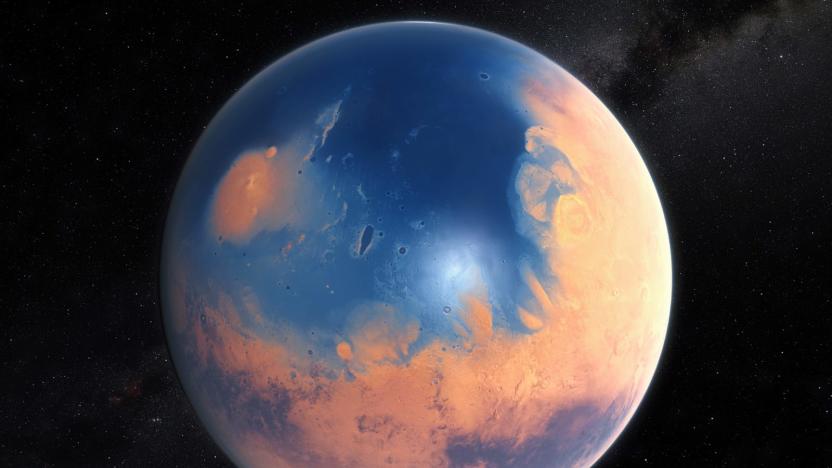
Meteor impact may have started a 'mega-tsunami' on early Mars
There appears to be stronger evidence of a possible ocean on ancient Mars. A recent study indicates that the meteor that created the 75-mile Lomonosov crater may have produced a "mega-tsunami" that left its mark on the planet. Its rim is the same height as the estimated depth of the ocean and resembles marine craters on Earth. Also, a hole in the southern lip of the crater could have been the result of the ocean roaring back from that direction. Earlier evidence had hinted the ocean's shores were shaped by at least one impact in the same general area as the Lomonosov crater -- this latest study, however, has narrowed things down to a specific impact site.

How NASA keeps its astronauts safe and sane in space
Astronauts endure one of the most dangerous, high stakes, high stress professions on (or off) the planet -- a job matched in isolation, confinement and extremity perhaps only by arctic field scientists and ballistic missile submarine crews. Of course, the latter two rarely have to deal with radiation exposure, gravity changes, or the prospect of being sucked out an airlock.
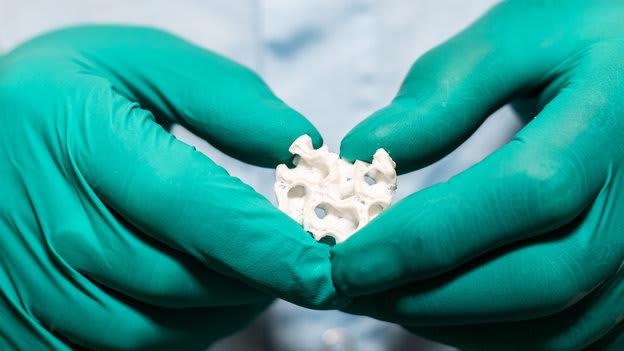
Mars crew could 3D-print skin and bones for injuries
A journey to Mars will take several months, and humans won't be able to turn back if an astronaut suffers a burn or a bone fracture. Which is why scientists at the University Hospital of Dresden Technical University have now produced the first bioprinted skin and bone samples for use in space. Even though treating patients with 3D-printed skin or bones is still in its early stages back on Earth, the technique is particularly vital in space, where the human body doesn't heal as quickly.

Help NASA name its Mars 2020 rover
NASA's Mars 2020 rover is beginning to take shape. Earlier this month, crews installed some of its legs and six of its wheels. Now, the vehicle needs a name, and for that, NASA is turning to students. Beginning in fall 2019, NASA will run a nationwide "Name the Rover" contest open to K-12 students in the US. The spacecraft will need a name by July 2020, when it's expected to launch.
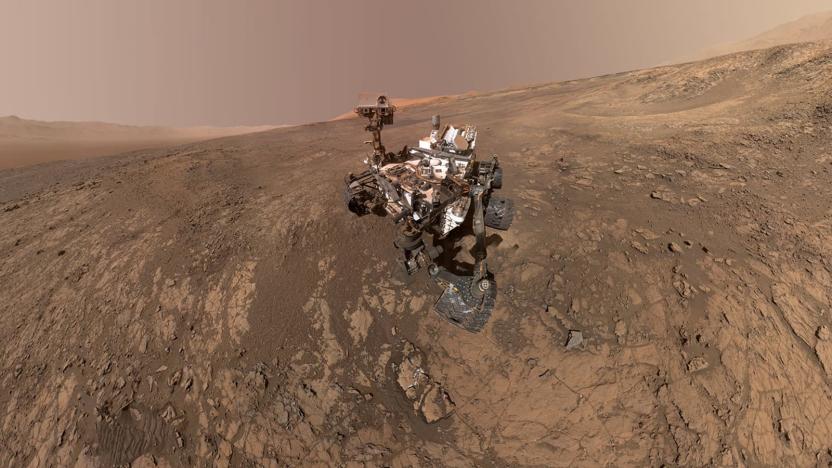
NASA just witnessed its biggest methane gas emission on Mars
NASA has confirmed that the Curiosity rover recently detected the "largest amount of methane ever measured during the mission." The levels were enough to pause the rover's activities as scientists sought more answers: Methane is a gas typically produced by life as we know it, after all, and it could be a sign of life on the planet. Curiosity's methane reading came to 21 parts per billion units by volume, which is thrice the amount it sniffed out during a surge in 2013.
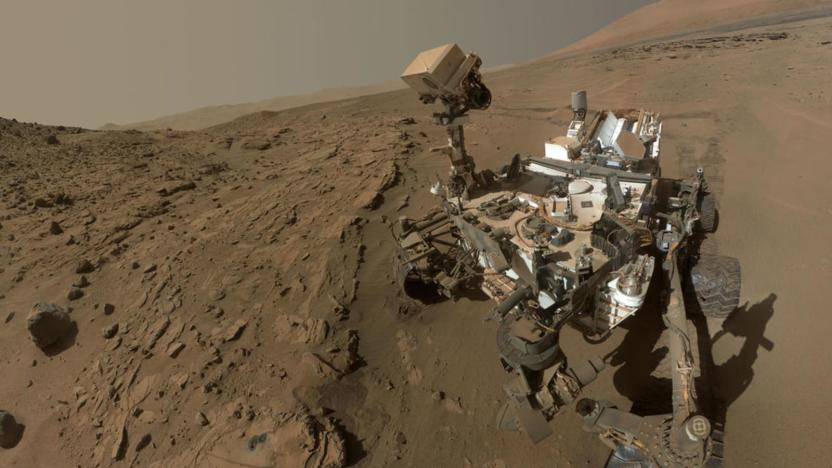
Curiosity rover finds gas levels on Mars hinting at possibility of life
It's easy to get jaded about potential signs of life on Mars, but a recent discovery might raise eyebrows. The New York Times has learned that NASA's Curiosity rover has detected "startlingly high" levels of methane -- the gas typically produced by life as we know it. The quantities are still tiny at 21 parts per billion, but that's three times the amount Curiosity spotted during a surge in 2013. The rover's operators were reportedly surprised enough to pause regularly scheduled studies to obtain follow-up data, with the additional findings slated to arrive on June 24th.
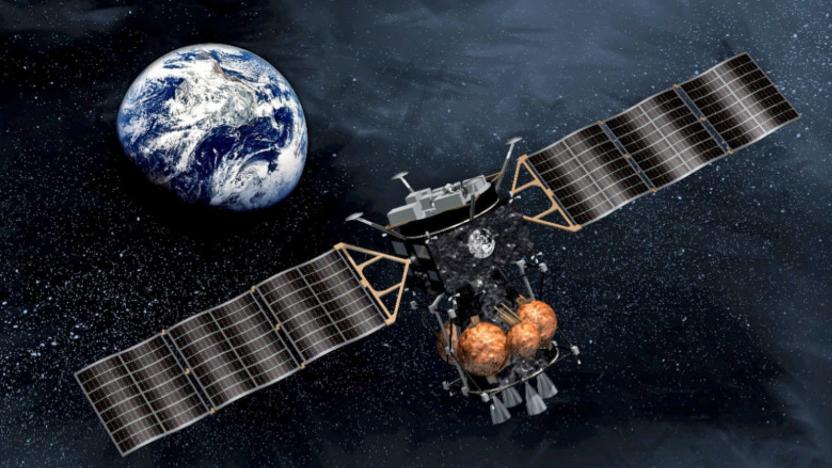
Japan will send a rover to Martian moons with help from Germany and France
We might be able to study the Martian moons Phobos and Deimos a lot more closely in the coming decade. Japan Aerospace Exploration Agency (JAXA) has teamed up with Germany's and France's space agencies to send a spacecraft with a rover to the red planet's faithful companions. In fact, JAXA has just finalized its agreement to work with the German Aerospace Center (DLR) on the study-phase activities for its Martian Moons eXploration (MMX) mission.







